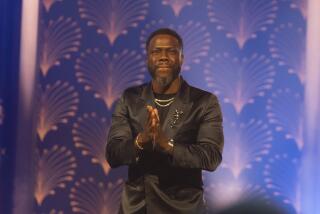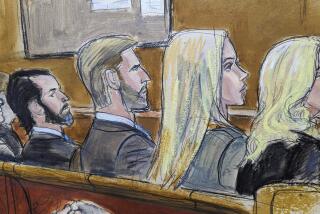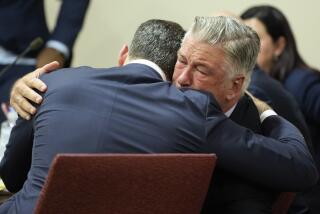Case of the Missing Evidence
This year’s bumper crop of celebrity trials has exposed a process in which lawyers fight over the evidence to be seen by a jury. While the law often speaks of a jury as the “fact-finder,” the truth is that we allow jurors only to find facts that we leave for them, like not-so-hidden Easter eggs in bushes of evidence.
Of course, jurors are often entirely unaware that the facts before them have been highly manipulated and that some of the most telling facts discussed in public have been excluded from the trial. It is often not until after a trial that jurors learn of facts that would have changed their verdict. This has led some jurors to publicly charge that they were deceived in recent cases. In four high-profile trials, the exclusion of certain evidence may well produce such a result -- verdicts won not by the evidence viewed by a jury but rather by evidence kept from it.
Clearly, there are good reasons to suppress some evidence: It may have been illegally gathered, privileged or inadmissible under such rules as hearsay. However, judges now routinely restrict evidence that any ordinary person would view as essential to a well-informed verdict.
Consider the murder trial of actor Robert Blake. The problem for the government in this case was never figuring out who would have wanted to kill Blake’s wife, Bonny Lee Bakley, but who didn’t want to kill her. Even the prosecutors acknowledged that Bakley “might be considered by some to be what is commonly referred to as a ‘grifter’ or ‘con artist.’ ” That raises an obvious problem for the prosecution, which admits that it has no forensic or eyewitness testimony linking Blake to the murder.
In a circumstantial case, the existence of possible alternative murderers can be devastating, so the prosecutors have asked the court to keep Bakley’s past from the jurors, including evidence of potentially hundreds of men scammed by her in lonely-hearts cons, as well as disgruntled customers of her past pornography business.
One of the most cited potential suspects is Christian Brando, the son of Marlon Brando who pleaded guilty in 1991 to killing his sister’s boyfriend. Brando had an affair with Bakley and was reportedly outraged by her initially convincing him that her baby was his and trying to “game” him over the pregnancy. In a taped conversation, a clearly upset Brando tells Bakley, “You’re lucky somebody ain’t out there to put a bullet in your head.” A former friend of Brando’s came forward recently to say that she heard Brando say, “Somebody needs to put a bullet into that girl’s head.” He allegedly said this to stuntman Ronald “Duffy” Hambleton, who allegedly responded with, “Yeah, that’s right.”
The prosecutors insist that such evidence has no relevance for a jury despite the fact that they want another recorded conversation between Blake and Bakley admitted into evidence. In that conversation, Blake accuses Bakley of the same types of lies and deception. Yet, unlike Brando, Blake does not refer to anyone killing her. Moreover, the prosecutors want to call Hambleton as a witness to testify that Blake asked him to kill Bakley but bar any questions about the similar statements by Brando.
None of this suggests that Brando is the more likely killer or that the evidence does not strongly implicate Blake. Moreover, defense efforts to exclude tapes of Blake raise the same concerns. It is hard to see how justice is served by keeping such evidence from a jury.
To some extent, these attempts to exclude evidence reflect a lack of faith in jurors to use their common sense and to weigh evidence. Instead, we tweak and torture evidence to fit a different image. This turns some criminal trials into a type of legal bonsai -- twisted to grow in a more controlled shape by the judges and lawyers.
Once legislators and courts began this process decades ago, they became addicted to the task of tailoring and tucking evidence -- at the high risk of determining the outcome by omission.
Just Monday, in the Martha Stewart trial, the judge barred Stewart’s lawyers from arguing that she is being prosecuted merely for claiming she was innocent. Yet Stewart is being charged with one count for publicly denying any wrongdoing and saying that she was cooperating with the government. Sounds like being charged for claiming innocence, but the judge has claimed the right to not only exclude evidence but to script defense arguments.
In the case of basketball star Kobe Bryant, the prosecutors are seeking to exclude evidence that could be highly damaging to the alleged victim and to their case. The defense wants to introduce evidence that it says will show that the woman had sex with another man soon after the alleged rape -- conduct that presumably would be in sharp conflict with the normal reaction of a rape victim. The defense also wants to introduce evidence that the woman allegedly has taken anti-psychotic medication and twice attempted suicide in an attempt, they say, to attract her boyfriend’s attention.
The alleged sexual history of the woman is barred under Colorado’s rape shield law. This law was meant to prevent the abuse of victims in criminal trials -- a long-standing problem in our courts. Indeed, in some past celebrity trials, like Errol Flynn’s 1942 prosecution for statutory rape, the victims were publicly humiliated with their prior sexual history. Such evidence does not advance the interests of justice and deters women from coming forward.
However, cases like Bryant’s indicate that the pendulum may have swung too far in the opposite direction. Assuming that the defense can show the court compelling evidence of sexual contact shortly after a rape, it would be ridiculous to claim that such evidence is not relevant in judging the credibility of the victim. This would be different from the type of prejudicial use of sexual history that led to the rape shield law -- when someone’s unrelated sexual history was paraded before jurors to show that he or she was promiscuous. This evidence would go directly to the mind-set and conduct of the alleged victim during the relevant time frame of the alleged crime.
Michael Jackson may also soon face a similar challenge from prosecutors in his expected use of the history of his alleged victim and the boy’s mother. The mother allegedly has a history of drug abuse, shoplifting and an allegation of assault against J.C. Penney after she was allegedly caught with stolen merchandise. This evidence goes directly to the defense theory that the case was motivated by money and opportunism.
American justice has become as natural as treated tap water. Just as we add “clarifiers” and remove elements to improve the taste of water, we now “prepare” cases for jury consumption -- leaving a jury with only a taste test of a purified, sanitized and manufactured evidence.
However, crime, like life, is full of contradictions and distasteful elements. “Clarifying” the evidence is simply a fancy term for manipulating not just the evidence but the outcomes of trials.
More to Read
Sign up for Essential California
The most important California stories and recommendations in your inbox every morning.
You may occasionally receive promotional content from the Los Angeles Times.









